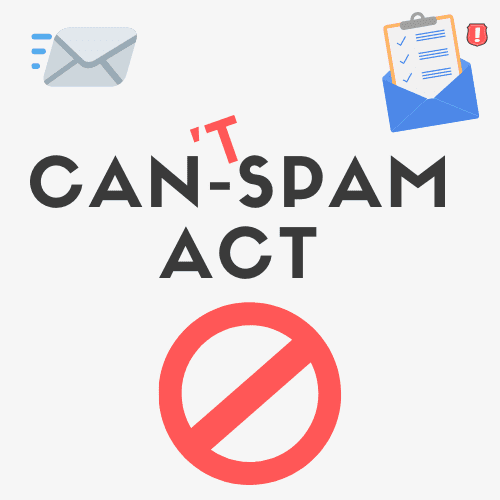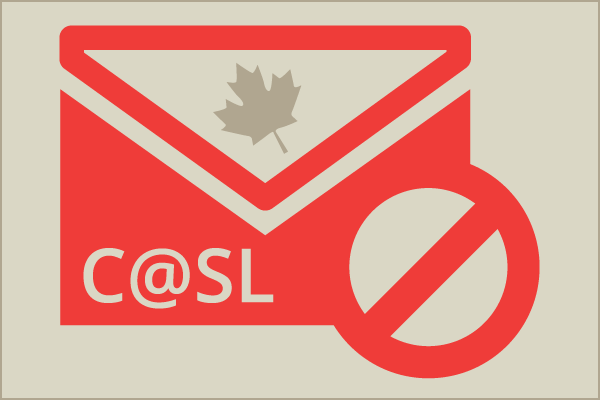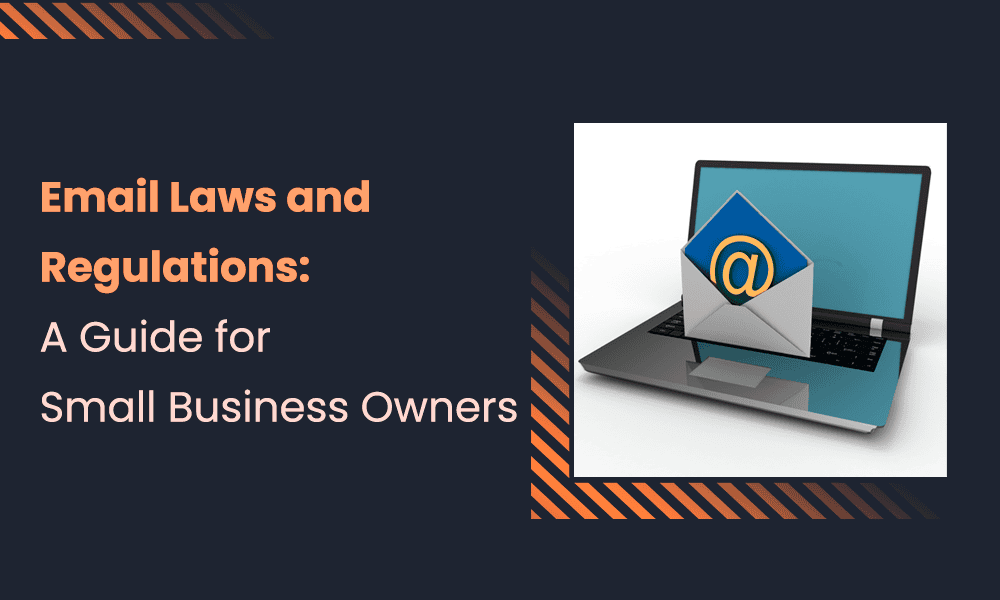Email laws and regulations can be tricky for a small business owner. After all, there are so many, and they keep changing from region to region!
Email marketing brings back a zesty return on investment. But to enjoy it, you must learn how to do it right without upsetting potential customers or breaking any email marketing regulations. And we are here to help you do that.
In this blog post, we’ll explain all you need to know about email laws and ensure you are sending emails the right (read: legal) way.
Table of Contents
Why Is Email Compliance Needed?
Email compliance is a set of best practices to ensure your email campaigns are legal, ethical, and effective.
Compliance regulations change depending on the recipients’ location. Some of the most important ones are the Controlling the Assault of Non-Solicited Pornography And Marketing (CAN-SPAM Act) in the US, the General Data Protection Regulation (GDPR) in the European Union, and Canada’s Anti-Spam Legislation (CASL laws) in Canada.
Following email compliance laws keeps you out of the dreaded spam folder, but that might be the least of your worries. Offenders can also be charged hefty penalties.
Non-compliance can also lead to:
- Loss of customer trust
- Damaged brand reputation
- Damaged sender reputation
- Reduced email deliverability rates
- Being blocked by email providers
- Wasted time and resources
Building trust through email marketing compliance
You should understand that compliance laws exist to protect consumers’ privacy and sensitive data. These laws also save them from internet scams like phishing, spoofing, and identity theft.
Think of email marketing as using emails to build your customer relationships. Every successful business relationship is built on trust and respect. Compliance ensures that you’re approaching your customers the right way.
Imagine yourself in a business interaction. You wouldn’t barge unannounced into a client’s personal space and start pitching your best deals, right?
Maintain a similar level of professionalism in your marketing emails as you would in a face-to-face business interaction. The secret sauce of effective email marketing is to make your emails feel like welcomed conversations.
Be respectful and introduce yourself, get the customer’s consent before sending them any email, and give them a clear option to walk away (i.e., unsubscribe) if they are not interested.
Understanding Consent in Email Marketing
You might have heard that content is king, but have you heard about consent?
Consent is equally important in marketing strategies that deliver content straight to your customer’s inbox. Before diving into specific email compliance laws, let’s explore the different types of consent and why they matter for your email marketing efforts.
Explicit vs implicit consent: Understanding the difference
When it comes to email marketing, there are two main types of consent that you should know about.
Explicit consent
This is the gold standard for email marketing compliance. Explicit consent allows potential customers to actively choose if they wish to receive your emails.
You can gain explicit consent by providing a check box, a confirmation link, or any other method that lets them know what they are signing up for.
Implied consent
This is a less reliable and assumed form of consent. You can assume someone might be okay with receiving commercial emails because they bought something from your business.
So even if the recipient didn’t explicitly agree to receive the mail, they can receive it because they engaged with your business.
Why explicit consent matters for email marketers
In today’s regulatory environment, obtaining explicit consent is the safer course of action for email marketing. Here’s why.
- Compliance: Many regulations, like GDPR and CASL, require explicit opt-in consent. Sticking to this approach ensures you’re on the right side of the law and avoid potential fines.
- Engagement: Focus on getting people to explicitly opt into your content. This way, you’ll reach a more engaged audience, leading to better campaign results!
- Trust building: Asking for permission shows you respect your audience’s time and privacy. This can foster trust and strengthen your brand reputation.
Moving beyond the checkbox: Building a culture of consent
Building a foundation of consent-based marketing will ensure that your marketing emails are effective and welcomed by your subscribers, not seen as unwanted spam. Here’s how to cultivate a strong culture of consent with your email marketing strategy.
- Be transparent: Explain to your customers what they will receive by signing up and how often. Don’t mislead them about the content or frequency of your marketing emails.
- Offer value propositions: Give your potential customers a reason to subscribe. Incentivize opt-ins with valuable content, exclusive deals, or industry insights relevant to their interests.
- Use double opt-in for confirmation: This verification step ensures someone truly wants your emails and reduces the risk of fake sign-ups.
- Don’t hide the unsubscribe options: Include a prominent link in every email to make it easy for people to unsubscribe. Respect their right to control their inboxes.
Remember, consent is an ongoing process, not a one-time transaction. By prioritizing explicit consent, building trust, and offering valuable content, you can ensure your email marketing strategy prospers in today’s compliance-driven landscape.
Read also: Avoiding the Spam Folder: An Intro to Email Deliverability
Key Email Laws Worldwide
Now that you understand the importance of email compliance and consent, let’s understand the laws that govern email marketing.
Email marketing laws change according to your audience’s location. So, you will need to update your email campaign accordingly to remain compliant. Yes, this means you will need to be aware of multiple email compliance laws, and we are here to help you get started.
Let’s discuss some of these laws.
CAN-SPAM
We’ll save you some trouble — CAN-SPAM does not mean you can spam; it’s quite the opposite. It’s the original CanNOT SPAM Act 😏

Terrible puns aside, the CAN-SPAM Act stands for “The Controlling the Assault of Non-Solicited Pornography And Marketing Act of 2003”.
The Federal Trade Commission (FTC) passed this act in 2003, establishing the first national standards for sending commercial electronic messages in the United States. While it was not the first email compliance law, it was very influential in shaping subsequent laws.
The CAN-SPAM Act laid the groundwork for several compliance laws that have influenced other email regulations worldwide.
Here are some of its requirements.
Commercial email regulation
The CAN-SPAM Act was among the first to target and regulate commercial emails specifically. By doing so, this act set a baseline for what is acceptable in email marketing.
Permission-based marketing (opt-out)
Under the CAN-SPAM Act, you don’t need explicit permission from customers to send them commercial mail. Doing business with someone beforehand allows you to assume implied consent.
However, it emphasizes respecting the recipient’s wishes within ten days if they no longer want to receive the emails. The act clarifies that the opt-out process should be very simple and not bug the recipient with unnecessary steps.
Clear sender identification
Some people might like mystery Santas, but let’s face it: nobody likes commercial mail from mystery senders. The CAN-SPAM Act mandates that businesses must clearly and accurately identify themselves from the get-go.
Your email address, header information, domain name, etc, must carry your or your business’s name. You must also mention your physical postal address so that the recipients know that your business is legitimate and know how to contact you if they want to.
Moreover, you should also clarify that the email is an advertisement.
Note: These three rules (along with obtaining explicit consent before sending commercial emails) are considered a part of good email marketing hygiene. We advise you to follow these regardless of your business region.
Fines
In August 2023, the Department of Justice filed a complaint against Experian Consumer Services on behalf of the FTC. The proposed order carried a penalty of $650,000.
Why did this happen?
Because Experian didn’t offer its email recipients a way to opt out of its commercial emails, it clearly violated the CAN-SPAM Act. So, while CAN-SPAM might be considered one of the more lenient email compliance laws, that doesn’t mean you can take it lightly.
The FTC can impose fines of up to $51,744 for each email that doesn’t comply with the act. These per-email fines can quickly add up, like in the case of Experian, and frankly, it’s easier to just follow these laws.
Read also: Understanding Mailer Daemon: How to Manage Bounce-Back Emails
GDPR

The GDPR is a different beast altogether. It is much stricter and more comprehensive than CAN-SPAM. GDPR stands for General Data Protection Regulation and has been effective since May 2018.
GDPR is a privacy law governing all platforms that collect personal data from European Union (EU) residents and the European Economic Area (EEA).
This personal data includes identifiable information such as name, phone number, location data, email address, IP address, etc. The GDPR also applies to sensitive personal data, such as information about health, political opinions, genetics, etc.
Unlike the CAN-SPAM Act, this law is not limited to email communications. It covers various electronic communication channels, including texts, messaging apps, and social media messages transferring personal data.
But that’s not all – websites, online forms, CRM systems, databases, mobile apps, and even wearables that collect personal information are also subject to the GDPR.
Moreover, while CAN-SPAM focuses primarily on preventing spam and deceptive email practices, GDPR takes a broader approach. It gives a lot of priority to data privacy, i.e., individual rights over their data and data protection.
Here are the key things you need to know about GDPR’s features.
Strong emphasis on consent
GDPR requires explicit “opt-in” consent before you can collect or use anyone’s personal data, such as by adding them to your mailing list.
This is a stricter approach than CAN-SPAM’s “opt-out” model, which allows you to use someone’s email address to send commercial mail unless they opt out.
Under GDPR’s opt-in, the default is you cannot touch someone’s personal data or contact them until they clearly consent to it.
Additionally, you must keep a record of acquired consent from your subscribers and produce it when required. This record could be a timestamped sign-up form, a confirmation email with a click-through link, or any other verifiable method.
Individual data rights
The GDPR truly shines when it comes to giving individuals the right to access their data. As an email marketer, here are the data rights the GDPR provides to the citizens of the EU that you need to respect.
- Access: EU subscribers can request a copy of their personal information you hold. This could include their email address, name, or any other information you collect during signup.
- Rectification: If a subscriber finds any errors in their information (e.g., a misspelled name), they have the right to request that you correct it.
- Erasure/”Right to be Forgotten”: In certain situations, subscribers can request that you delete their data completely from your records. This could be if they unsubscribe or withdraw their consent.
- Data portability: Subscribers also have the right to receive their data in a commonly used format. This right allows them to easily transfer their information to another service if they choose to do so.
Your responsibilities
The GDPR considers you a data controller if you decide how you will use the email addresses you collect from the people in EU residents.
As a data controller, you have some important responsibilities, including safeguarding the data, reporting breaches, and maintaining a clear privacy policy.
- Safeguarding data: You’re responsible for safeguarding the email addresses you collect. Use strong passwords, a reputable email marketing platform with security features, and keep software updated to prevent unauthorized access or breaches.
- Reporting breaches: In the case of any data breach, you are required to report to a Data Protection Authority (DPA) in your region. Depending on the situation, you might also be required to inform the individuals whose data was exposed.
- Privacy Policy: Finally, you should have an easy-to-understand privacy policy that outlines how you collect, use, and store subscriber data. This transparency builds trust with your EU subscribers and informs them about their rights under GDPR.
Stakes are high
In 2019, the Information Commissioner’s Office (ICO) fined Eldon Insurance Services £60,000 for sending unsolicited marketing emails.
But the stakes can be much higher. Violating GDPR can result in fines of up to €20 million or 4% of your global annual revenue—whichever is more. Small businesses or even individuals aren’t exempt from these fines.
The takeaway is that respecting user consent and data rights is not optional under the GDPR. Ramp up your data protection practices to market successfully while staying compliant.
Check out the official GDPR checklist for step-by-step guidance on achieving full compliance for your email marketing activities in the EU.
Read also: All The Email Spam Words You Should Avoid: A 2024 List
CASL

Let’s hop back to North America and discuss one last but equally important Anti-Spam law — Canada’s Anti-Spam Legislation (CASL), officially known as the Fighting Internet and Wireless Spam Act.
The CASL regulates how commercial electronic messages (CEMs) are sent in Canada.
Under CASL, CEMs include not just emails but also texts and direct messages sent for commercial purposes (like marketing messages), much like the GDPR’s broad definition of electronic communications.
CASL shares similarities with both the CAN-SPAM Act and the GDPR regarding email marketing communications. Let’s quickly discuss some of its requirements:
Consent requirements
Like the GDPR, CASL demands express consent from recipients before sending CEMs. This requirement is stricter than CAN-SPAM’s opt-out approach.
Identification
Akin to CAN-SPAM’s requirements, you must maintain transparency under CASL. All your CEMs must clearly identify you and provide full contact information.
Unsubscribe mechanism
Consistent with CAN-SPAM and the GDPR’s data subject rights, CASL mandates you to include a clear and prominent way for your email recipients to unsubscribe or opt out of future CEMs. So, you must honor opt-out requests promptly.
Subject line transparency
Mirroring CAN-SPAM’s provisions against deceptive subject lines, CASL prohibits misleading or false subject lines that don’t match the email content.
Evidence of consent
Just like the GDPR, the burden of proof rests on you, the sender, under CASL. When required, you will need to demonstrate that you obtained express consent properly before sending a CEM.
Penalties
In 2015, Plentyoffish Media Inc., the company behind the online dating website PlentyofFish.com, was fined $48,000 for not including an easy-to-use unsubscribe mechanism in its emails.
This company got off easy as violating CASL can trigger financial penalties of up to $1 million for individuals and $10 million for corporations per violation.
There are several more compliance laws you might need; here is a list of them.
Read also: How To Avoid Spam Filters For Better Email Deliverability
Managing Email Lists Ethically and Legally
Now that we’ve explored the legalities of email marketing, let’s dive into the heart of it all: building and managing email lists. A healthy, compliant list is the foundation for successful campaigns and staying on the right side of regulations.
Here are some key strategies that help.
1. Prioritize explicit consent
Remember that regulations like GDPR and CASL emphasize explicit opt-in consent. Ensure your signup forms clearly explain what users subscribe to and how often they’ll hear from you. Double opt-in verification adds an extra layer of confirmation.
2. Segment your audience
Segment your subscriber list based on demographics, interests, or past engagement. This segmentation allows you to send targeted emails with relevant content, increasing engagement and reducing unsubscribes.
3. Keep your list clean
Regularly remove inactive subscribers who haven’t opened your emails in a set timeframe (e.g., 3-6 months).
This process improves deliverability rates and ensures you’re reaching engaged recipients. Before removing them, you can consider offering a re-engagement campaign to try to win them back.
4. Respect unsubscribe requests
It’s inevitable that some subscribers will want to opt out. Make the unsubscribe process clear and easy to find in every email. Always honor these requests promptly to avoid potential violations.
5. Maintain accurate data
Maintain a list with accurate and up-to-date email addresses. Consider implementing a bounce verification process to identify and remove invalid addresses that can harm your sender reputation.
6. Transparency builds trust
Be upfront about your data collection practices and how you use email addresses. Provide a clear privacy policy that outlines your commitment to data protection.
7. Automate for efficiency
Many email marketing platforms like EngageBay offer automation tools for list management tasks like unsubscribes, suppression lists, and bounce handling. Automation streamlines the process and minimizes manual errors.
8. Never purchase a mailing list
Suppose you purchase a mailing list from a vendor. You can never be sure they received people’s consent before selling their email addresses. Moreover, it is unethical and an invasion of their privacy. Don’t do that. A similar good practice would be never to repurpose a mailing list. Always grow your list organically.
By following these best practices, you can build a healthy email list that nurtures your subscriber’s trust, improves campaign performance, and ensures compliance with email regulations.
Remember, the best email campaigns always start with a clean email list that includes people happy to hear from you.
Read also: Bounce Rates and Email Deliverability – A Simple Guide
Conclusion
We hope you feel better prepared to deal with the intricacies of email compliance regulations. Remember that compliance isn’t just about following the rules; it’s about building relationships with your subscribers. With that in mind, we wish your customers always smile when they receive your emails!
EngageBay is an all-in-one marketing, sales, and customer support software for small businesses and startups. You get email marketing, marketing automation, email templates, personalization, and more.
Sign up with EngageBay for free, or book a demo with our experts.
